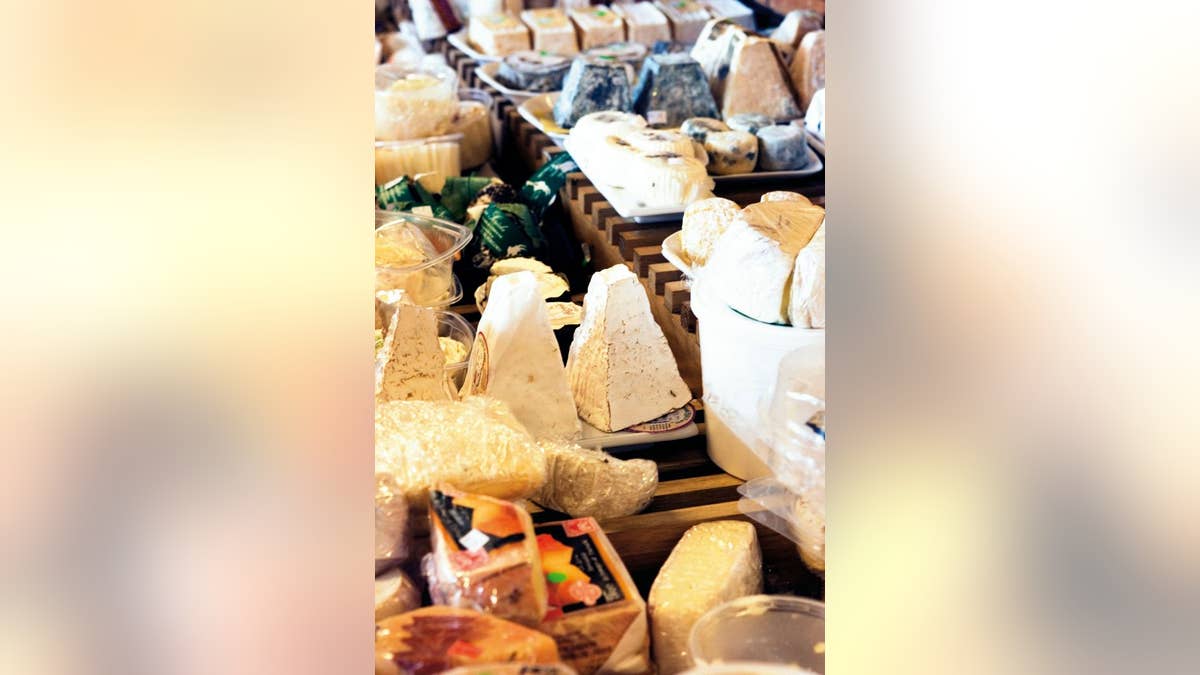
These days, cheese has become a hot topic among foodies. Chefs are going on cheese trips instead of wine tastings, and people are leaving their 9 to 5 jobs to become “apprentices” at tiny cheese farms in the country.
Why not arrange your own cheese tasting? Invite your friends over and ask them to bring one cheese and learn a little about it for the evening.
To help, we went to New York City party planner Linnea Johansson for an A-to-Z guide on everything you need to know about cheese.
Cheese Terminology:
- Fromage: The French word for cheese
- Cendre: The French name for cheese that has been ripened in ash
- Pecorino: The Italian name for cheese made with sheep’s milk
- Ferme/Fermier: The French name for cheese produced on a farm
- Coulant: The French name for runny cheeses such as a Brie or Camembert
- Capra: The Italian name for goat’s milk cheese
- Chèvre: The French word for goat, used to describe all goat’s-milk cheeses
- Bleu: The French word for blue, used to describe blue cheese/blue-vein cheese
- Tome: The French word used to describe cheeses produced in the mountain regions
Guide to Imported Cheeses:
Fresh or Unripened Cheese:
- Feta: Greek sheep’s or goat’s-milk cheese, salted
- Mascarpone: Cheese from Italy, made with cow’s milk and commonly used for desserts since it has a sweet flavor
- Mozzarella: Cheese from Italy, traditionally made with water buffalo milk, also has a sweet flavor
- Ricotta: Cheese from Italy, consistency similar to cottage cheese, traditionally used in pasta sauces
Soft Cheese:(Cheeses with a thin skin and a creamy center)
- Brie: French rind-ripened cheese made from cow’s milk
- Camembert: French rind-ripened cheese, made with cow’s milk similar to Brie but with a slightly milder flavor
- Boursin: French triple cream cow’s milk cheese, usually flavored with spices and herbs
Semi-Soft Cheese: (Cheese with a soft and sliceable texture)
- Fontina: Italian cow’s milk cheese
- Gorgonzola: The famous blue vein Italian cow’s-milk cheese, which is much creamier than Stilton or Roquefort
- Havarti: Danish cow’s-milk cheese, often flavored with dill
- Gouda: Dutch cheese with a red or yellow wax, made from cow’s milk and has a creamy texture
- Roquefort: French blue-vein cheese, made with sheep’s milk
- Stilton: British blue-vein cheese made from cow’s milk.
Firm Cheese:
- Cheddar: The world’s most famous cheese is a cow’s-milk cheese produced both in Great Britain and the United States. It is naturally white, but is sometimes dyed orange. Tastes best when made from raw milk and aged.
- Emmentaler: Swiss cow’s-milk cheese
- Gruyère: Swiss cow’s-milk cheese that is similar in taste to emmentaler, but is aged longer and has a stronger flavor.
- Provolone: Flavorful Italian cheese, made from cow’s milk. Dolce is aged for 2 months, Piccante for 6 months. It also comes smoked.
Hard Cheese:(Cheeses that are aged and usually very flavorful)
- Asiago: Italian flavorful cow’s-milk cheese that is aged for at least 2 years
- Parmigiano-Reggiano (Parmesan): Italian cow’s-milk cheese, made exclusively in the region near Parma. One of the world’s oldest and most copied cheeses.
- Percorino-Romano: Italian sheep’s milk cheese from southern Italy.
